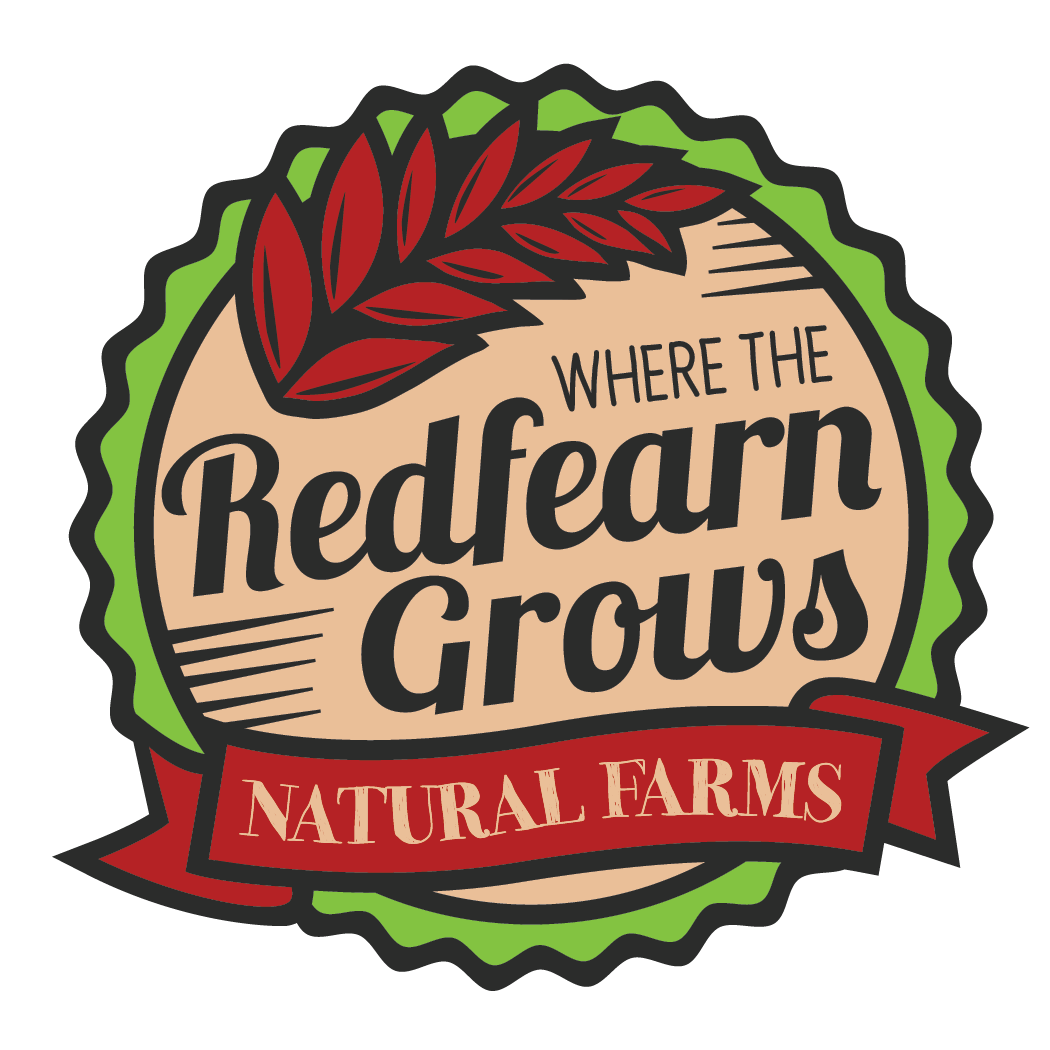Ever hear of no-till vegetable farming? We’e done no-till vegetable gardening in the past at our suburban garden in Blue Springs, MO and we’ve decided to experiment with no-till vegetable farming on a larger scale at Where the Redfearn Grows Natural Farms in Independence, MO. “No-till” means just what you would expect from such a term: you don’t till the garden. What? No tilling? No plowing? Why do we spend so much energy playing in the dirt as gardeners? Are you saying we don’t have to do that? Well, in some cases, yes, you can eliminate much of the backbreaking tilling or double-digging work in the garden.
At Where the Redfearn Grows Natural Farms our pre-planting preparations normally include a lot of tractor-powered tilling and bedding, but we are experimenting with larger scale no-till vegetable farming on a portion of our fields. With no-till vegetable farming, cover crops and mulches are the key.
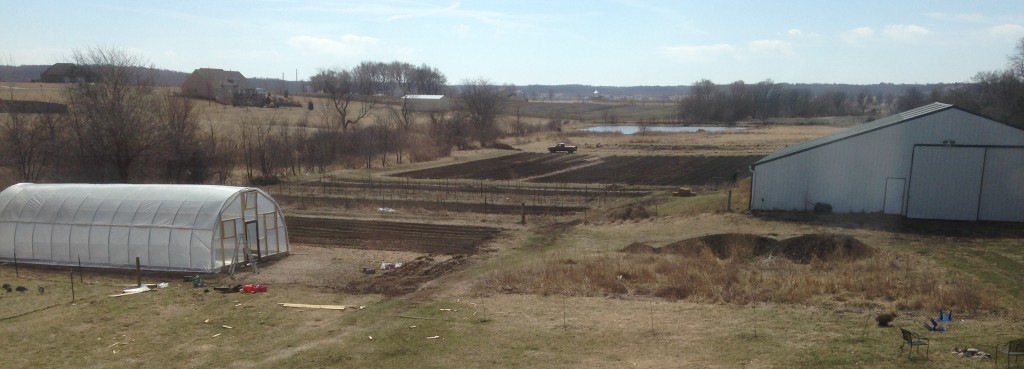
No-till vegetable farming has a number of advantages including: reduced soil loss, reduced water use, reduced weed pressure, no damage to soil structure, enhanced earthworm population, retains more carbon in the soil, and reduced tillage costs.
My rationale to experiment with no-till vegetable farming this year is not as altruistic as some. My reason: I was in a hurry!
Last year we experimented with some trellising techniques that took a considerable amount of time to build and which I didn’t want to disassemble and then try to store. Also, I needed trellises for the sugar snap peas I am planting (they grow 5′ tall and HAVE to have support). Since I didn’t want to take the trellises down, drive my tractor through and till, form beds, plant and then re-erect the trellis, I though it would be better to just leave them in place. But, now what? I love my tractor-mounted 5′ tiller, but without that tilling really is a chore. Sorry to all you gardeners that wrestle that front tine tiller around the garden every year, but I really didn’t feel like doing that and didn’t have the time.
Well, I examined the beds in question. They had been planted in tomatoes last year and we’d mulched them heavily with a thick layer of straw. When I pulled back the straw I was delighted to find soft friable soil, not hard packed dirt like you would see if you had left bare earth all winter. The thing is that thick organic mulches protect the soil from compaction and help keep it healthy and more natural.
Think about it: how often in nature do you see absolutely bare earth that has been turned over? In essence no-till organic vegetable farming gets really close to nature. There are drawbacks to no-till vegetable farming, bugs and pests enjoying the protection of your mulch all winter and emerging to munch on your lovely plants is the number one drawback in my opinion. But heck, like I said, I’m too lazy to disassemble and reassemble the trellises, so lets see what happens?
I checked the soil temperature under the mulch: 40 degrees F. That’s the minimum germination temperature. For comparison, my raised-tilled beds were 53 degrees F on the same day and soil temp in the greenhouse was 70 degrees F! Way to go radiant heat energy from the sun! So there you have another disadvantage of no-till vegetable farming: lower soil temperatures in spring. That can be turned into an advantage in the heat of summer though, so it might balance out.
So here’s what I did. I pulled back the straw mulch in a strip about 6 inches wide. Look at that beautiful soil. No need to till this!
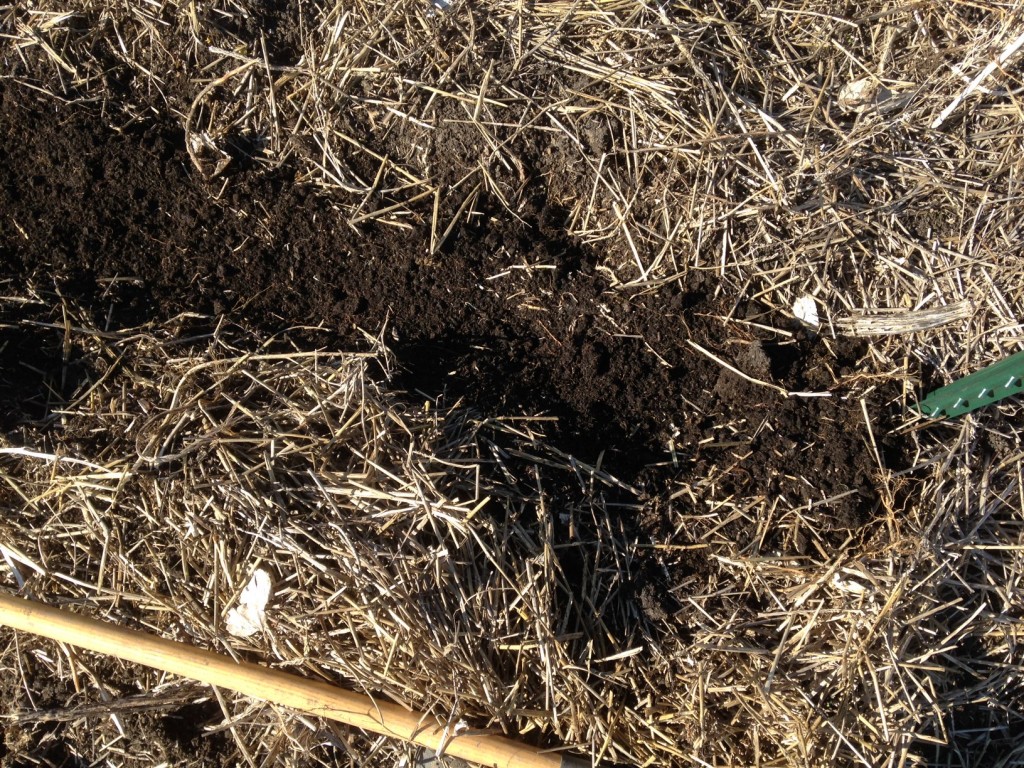
Then I made a small furrow with my hoe and planted the seeds. I planted in about a 3 inch wide band around 1″ apart. At this distance I won’t have to thin them out later on. I just have one of these rows per bed and the beds are 5′ on center, so there’s quite a bit of space between these bands.
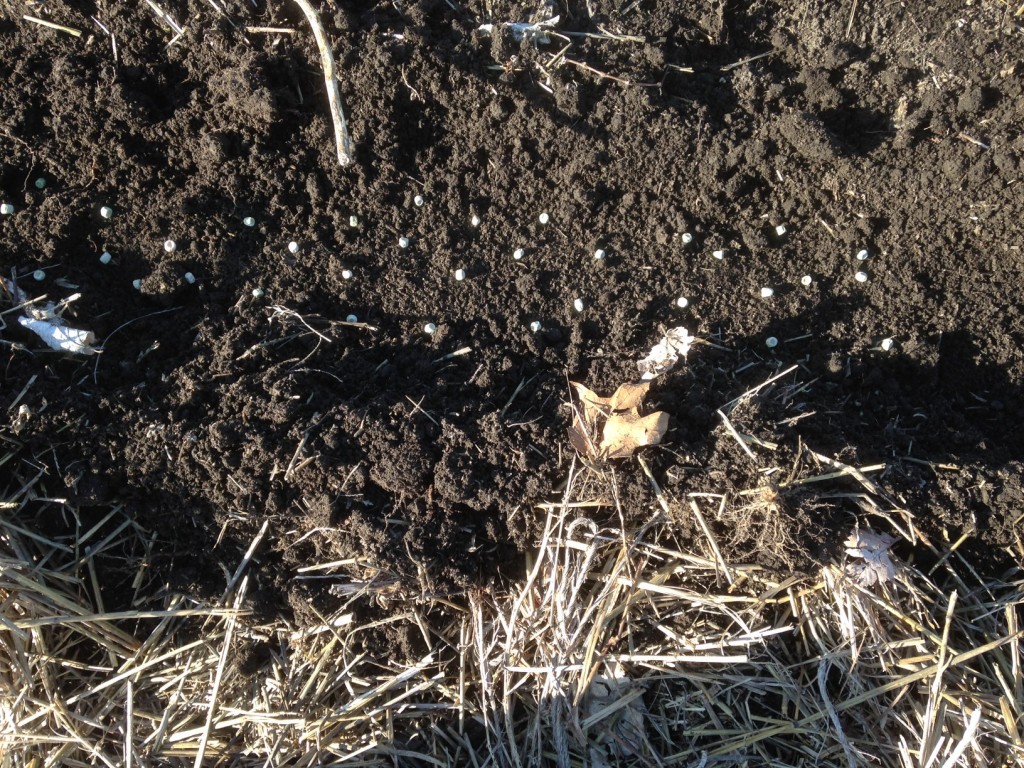
Last step is just to cover with about 1/2 inch of soil and press firmly. (I had some help from some little hands in the garden today).
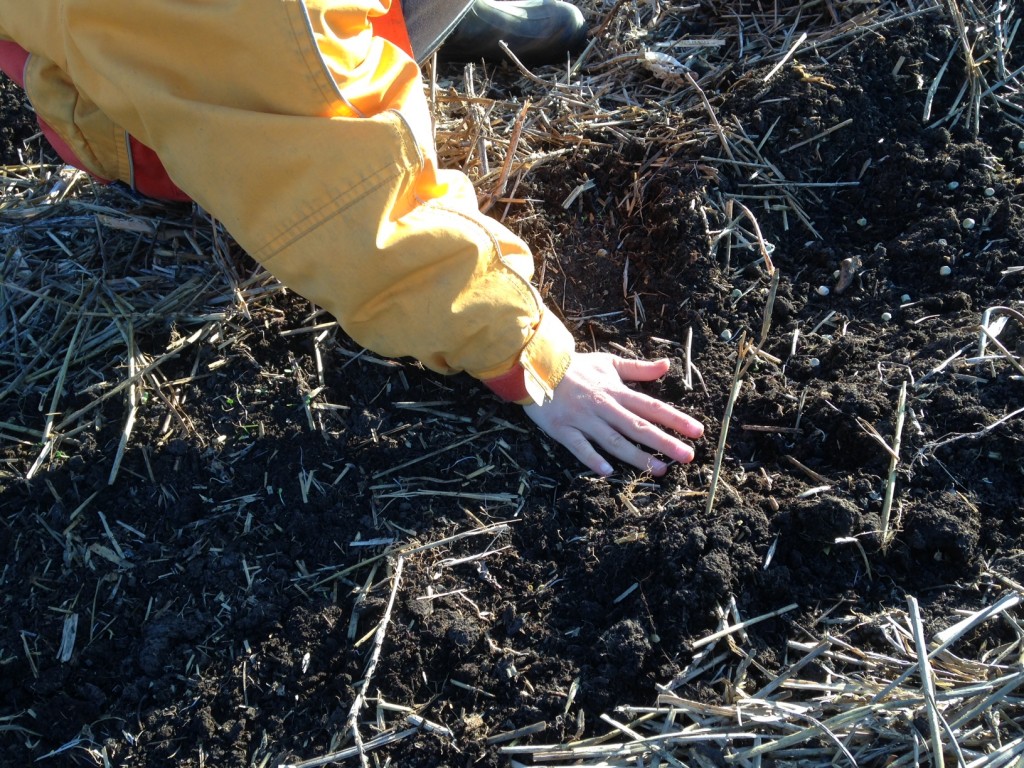
We’ll see how these do in the coming weeks. I hope the no-till vegetable farming is a success with these delicious sugar snap peas!
For those of you dying to read more on the subject of no-till vegetable farming see: Plowman’s Folly by E. Faulkner. Full disclosure: I haven’t read it yet.
